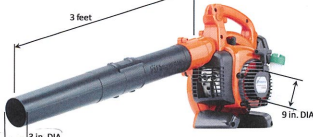The Relief Valve
The relief valve is designed or adjusted to open at a specific set pressure, ensuring that pressure vessels and other equipment are not exposed to pressures exceeding their intended limits, thus protecting them.
Definition:
A relief valve, also known as pressure relief valve (PRV) is a safety valve that’s primary function is to regulate or limit the pressure in a system. Without a PRV, the pressure in a system might otherwise build up past what a system can manage, resulting in instrument or equipment failure, or fire. Once the system reaches a predetermined set pressure, the PRV allows for excess pressure to be relieved. A common application for the PRV is in a home boiler system.

Objective:
To recognize that the relief valve has two functions: to maintain system operating pressure and to prevent system over pressurization.
Procedures:
To begin the experiment first you need to grab a needle valve and a flow meter from the cabinet in the back of the room. Following figure 1-3 set up the system exactly as shown on the work bench.

Once bench pump has been started and there is pressure going to the system, make sure the flow meter reads 0.00gpm and record the pressure on the pressure valve. After first pressure has been recorded start to slowly open the value preferably at increments of 0.25gpm (no more than 0.5 gpm). Make sure to have a total of 10 readings by the time the needle valve is fully open.
After the 10 readings have been taken turn off the work bench and dismantle the system. Return all valves and meters back to proper location and clean off your work bench.
Results:
The results of the experiment shows as the flow rate increases in the system the pressure will decrease. For the most part this seems to be a linear function and as the flow rate increases by 0.25 gpm the pressure will decrease by a constant 20 psi. Once you got close to the needle value being fully open there was a more exponential decay to the pressure in the system.
Analysis of the Results:
| Flow Rate (gpm) | Pressure (psi) |
| 0.00 | 590 |
| 0.50 | 560 |
| 0.75 | 540 |
| 1.00 | 520 |
| 1.25 | 500 |
| 1.50 | 480 |
| 1.75 | 460 |
| 2.00 | 440 |
| 2.25 | 390 |
| 2.37 | 360 |

Observations:
My observation on this experiment would be that from 0.00 gpm to 2.00 gpm the relationship between the flow rate and pressure would be an inverse linear equations. From 2.00 gpm to 2.37 gpm the relationship between pressure and flow rate would also inverse linear equation but with a steeper slope.
Conclusion:
My conclusion is that the relationship between flow rate and pressure is an inverse linear relationship. As flow rate increases the pressure will decrease.





